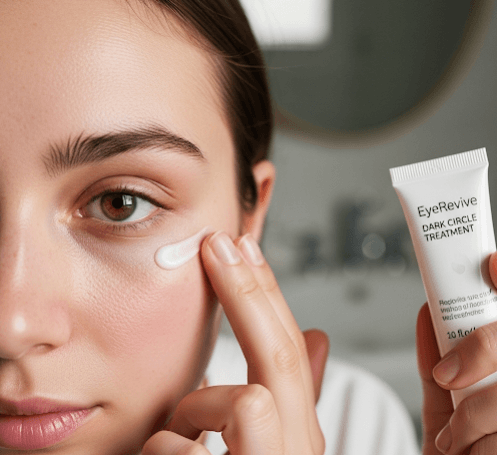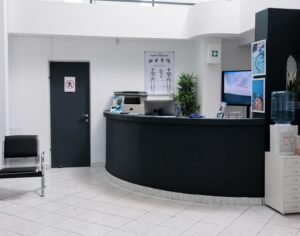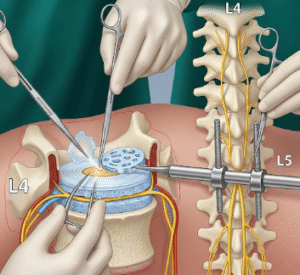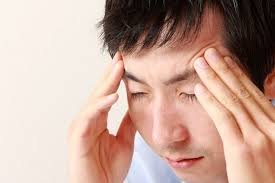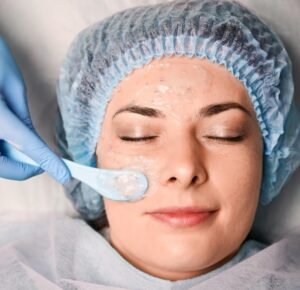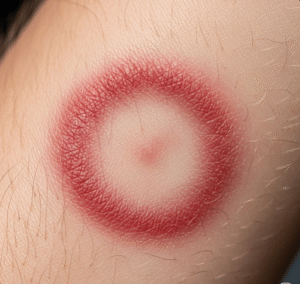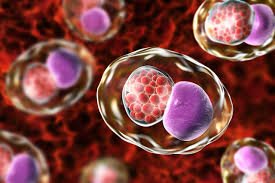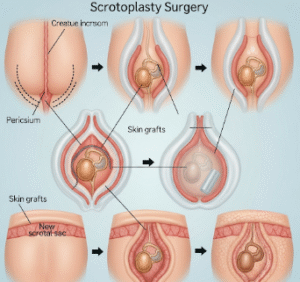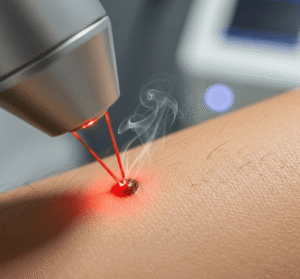➤ What it is
Dark circles are a common cosmetic concern where the skin under the eyes appears darker, giving a tired or aged appearance. They are not a disease but rather a multifactorial condition influenced by genetics, lifestyle, and skin physiology.
Types of dark circles:
- Pigmented (brownish) → due to excess melanin or post-inflammatory pigmentation.
- Vascular (bluish or purplish) → caused by visible blood vessels under thin skin.
- Structural (shadowing) → due to hollowness in the tear trough area or fat pad loss.
- Mixed type → combination of pigmentation, vascular, and structural changes.
In Korea, dark circle treatment is highly advanced, integrating dermatology, laser therapies, injectables, and K-beauty skincare regimens to deliver both medical correction and aesthetic harmony.
➤ Why it’s done
Dark circle treatment is sought for:
- Cosmetic Improvement → to achieve a refreshed, youthful, and healthy appearance.
- Psychological Benefits → reduces self-consciousness and fatigue-related stigma.
- Anti-Aging Goals → eye rejuvenation is central to overall facial youthfulness.
- Functional Support → some cases involve puffiness or under-eye hollows that affect comfort.
- Cultural Context in Korea → bright, clear under-eyes are seen as essential to beauty, making treatments widely requested.
➤ Alternatives
Different approaches exist depending on the cause of dark circles:
Topical Treatments
- Brightening creams with vitamin C, niacinamide, arbutin.
- Retinoids to thicken skin and reduce fine lines.
- Caffeine creams to reduce puffiness.
Injectables
- Dermal fillers (hyaluronic acid) → restore volume in tear troughs.
- Skin boosters (PN, PDRN, exosomes) → improve hydration and texture.
- PRP (platelet-rich plasma) → rejuvenates skin through growth factors.
Laser and Device-Based Treatments
- Q-switched or Pico lasers → target pigmentation.
- Nd:YAG and IPL → improve vascular dark circles.
- Fractional CO₂ laser or RF microneedling → tighten under-eye skin.
- HIFU (ultrasound therapy) → lifts sagging skin and reduces shadowing.
Surgical Options
- Lower blepharoplasty → removes or repositions fat pads to reduce puffiness or hollowness.
Korean Dermatology Alternatives
- Brightening facials with herbal or vitamin-infused serums.
- LED red light therapy → enhances skin healing and circulation.
- Cooling hydrogel masks → reduce puffiness and refresh skin.
➤ Preparation
Before treatment, proper preparation ensures safe and effective results:
- Dermatological Assessment
- Identify whether dark circles are pigmented, vascular, structural, or mixed.
- Digital skin imaging often used in Korean clinics.
- Lifestyle Adjustments
- Improve sleep habits, hydration, and diet.
- Reduce alcohol and smoking, which worsen vascular visibility.
- Pre-Treatment Skincare
- Switch to gentle cleansers and moisturizers for the under-eye.
- Stop strong exfoliants or retinoids 1–2 weeks before laser or injection treatments.
- Korean Clinic Preparation
- Cooling masks and hydrating eye patches often used before treatment.
- Baseline photography taken for progress comparison.
➤ How it’s Done
Dark circle treatment in Korea usually involves a combination of medical and cosmetic therapies:
1. Topical Therapy
- Brightening serums with vitamin C, niacinamide, and tranexamic acid.
- Retinoids to improve thickness of under-eye skin.
- Applied daily under dermatologist supervision.
2. Laser & Device-Based Treatments
- Q-switched / Pico lasers for pigmentation.
- IPL or Nd:YAG lasers for vascular improvement.
- Fractional CO₂ laser or RF microneedling for fine lines and texture.
- HIFU or radiofrequency tightening for sagging under-eye skin.
3. Injectables
- Hyaluronic acid fillers for tear trough hollowness.
- Skin boosters & PRP for hydration and rejuvenation.
- Microneedling with exosomes for regenerative repair.
4. Surgical Options
- Lower blepharoplasty for severe cases with fat pad protrusion.
- Performed with scar-minimizing Korean surgical techniques.
5. Korean Dermatology Additions
- Eye spa programs → hydrogel masks, cooling facials, LED sessions.
- Barrier-repair creams for sensitive skin under the eyes.
- Cosmetic camouflage creams recommended for temporary enhancement.
➤ Recovery
Recovery depends on the treatment chosen:
- Topical therapy → gradual improvement over weeks to months.
- Laser/IPL treatments → redness for 1–3 days; results in 2–4 weeks.
- Injectables → mild swelling or bruising for 1–3 days, results visible immediately.
- Blepharoplasty → 1–2 weeks of swelling, full recovery in 4–6 weeks.
Aftercare Instructions:
- Apply cold compresses for swelling.
- Use dermatologist-approved eye creams.
- Avoid rubbing or scratching the under-eye area.
- Apply sunscreen daily to prevent pigmentation recurrence.
Korean Recovery Practices:
- LED therapy sessions to reduce redness and accelerate healing.
- Brightening facials to maintain tone balance.
- Customized K-beauty skincare regimens for long-term under-eye health.
➤ Complications
Potential complications vary by treatment type:
- Topicals → irritation, dryness, or allergic reaction.
- Injectables → bruising, swelling, or rare vascular complications.
- Lasers/IPL → temporary pigmentation changes or redness.
- Surgery → asymmetry, scarring, or prolonged swelling.
Korean clinics minimize risks by:
- Using advanced devices with precision settings.
- Offering customized treatment plans based on skin analysis.
- Providing cosmetic recovery support after procedures.
➤ Treatment Options in Korea
Korea offers world-class options for dark circle management:
Why Korea excels:
- Integration of medical and aesthetic dermatology.
- Cutting-edge devices → Pico lasers, RF microneedling, HIFU.
- Expertise in injectables → natural, subtle under-eye rejuvenation.
- Cosmetic-focused culture → emphasis on bright, youthful eyes.
Unique Korean Practices:
- Combination therapy programs (fillers + lasers + facials).
- Eye spa care → hydrogel masks, herbal compresses, LED support.
- Brightening cosmeceuticals → dermatologist-developed K-beauty eye creams.
- Medical tourism clinics → specialized in under-eye rejuvenation packages.
✨ Final Thoughts
Dark Circle Treatment in Korea blends medical dermatology and aesthetic innovation to deliver both health-focused and beauty-focused outcomes. With topicals, lasers, injectables, skin boosters, and surgical options, patients can achieve brighter, smoother, and more youthful-looking under-eyes.
Korean dermatologists emphasize natural results and cosmetic harmony, ensuring that patients regain not only skin balance but also confidence and vitality in their appearance.
This integrated, patient-centered approach makes Korea a global leader in dark circle treatment, combining science, artistry, and K-beauty skincare excellence.

